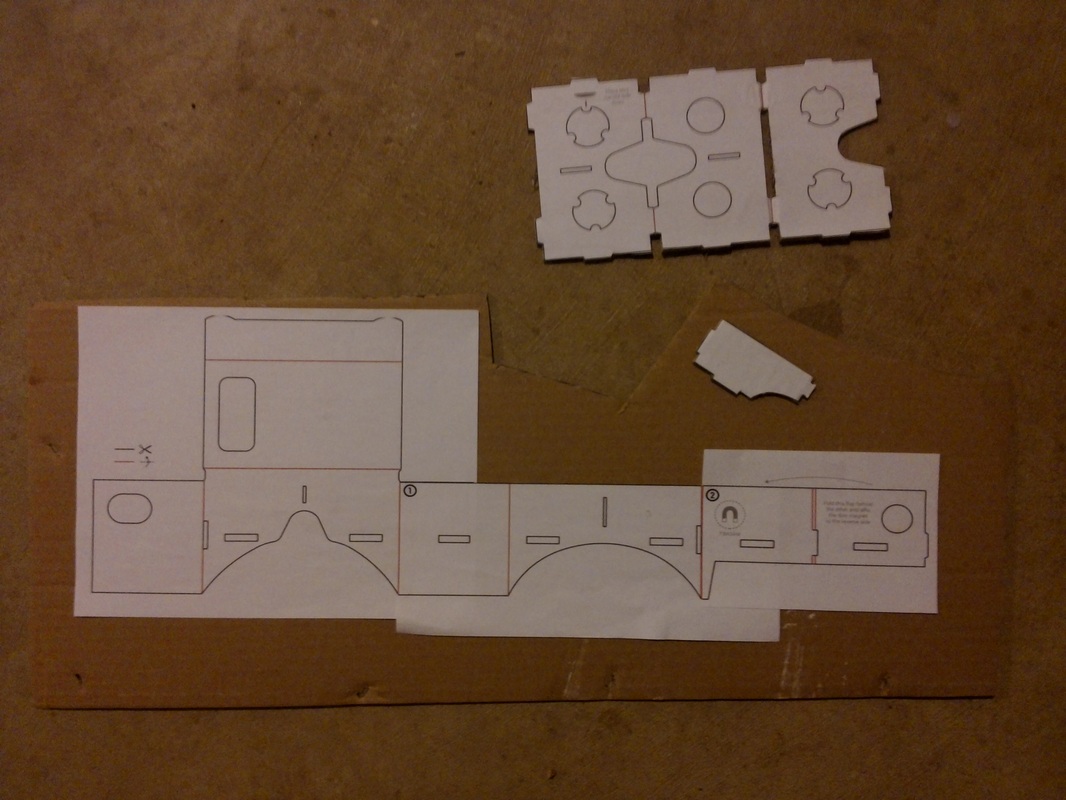VR headsets come in a wide variety. From the open source Google Cardboard & Durovis Dive to the more polished and private headsets like Oculus Rift. I have not had the pleasure of experiencing the Oculus Rift, but was able to get a taste for the technology for under $10 using the Google Cardboard template with lenses from Amazon.
When I first made the Cardboard, there were very few Apps available on Android besides the Cardboad Demo App. Now, there are more the 50 with newtitles popping up all the time. Besides the Apps/games there is more and more stereoscopic 3D videos available and 360 x 180 degree photospheres and video content that can trick your senses into thinking you're there. With new content being developed for these systems, I wanted to stick with it but wasn't prepared to invest in an Oculus Rift. Instead I decided to build an Open Dive headset, wich improves on the Cardboard by allowing adjustment on the lenses for focus, but still only cost about $30, including the cost of printing service found on 3Dhubs.com
When I first made the Cardboard, there were very few Apps available on Android besides the Cardboad Demo App. Now, there are more the 50 with newtitles popping up all the time. Besides the Apps/games there is more and more stereoscopic 3D videos available and 360 x 180 degree photospheres and video content that can trick your senses into thinking you're there. With new content being developed for these systems, I wanted to stick with it but wasn't prepared to invest in an Oculus Rift. Instead I decided to build an Open Dive headset, wich improves on the Cardboard by allowing adjustment on the lenses for focus, but still only cost about $30, including the cost of printing service found on 3Dhubs.com
I added a Cardboard style magnet switch to my Dive headset and bought a USB OTG cable for my Galaxy S5 so that I could use my PS3 controller for gaming.







